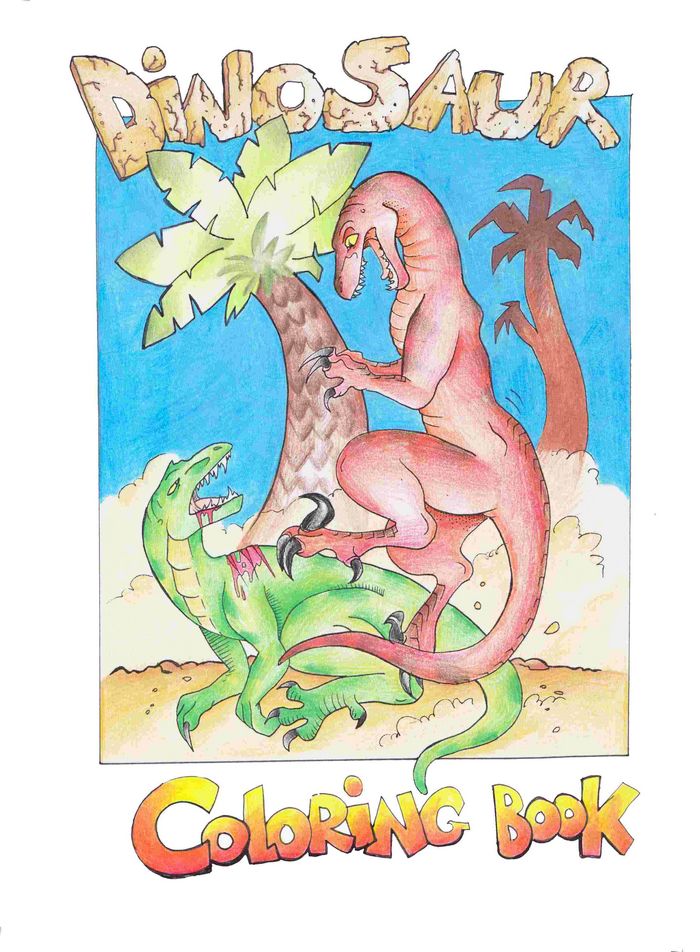Barosaurus could be a contender for the largest dinosaur ever. Certainly it was enormous, with some adult specimens reaching lengths of 26 metres (85 feet) and weighing in at more than 20 metric tonnes. There is some fossil evidence that larger individuals existed, probably over 50 metres in length with an associated weight of 100 tonnes. If this is the case then Barosaurus would be the largest known dinosaur. Read on to find out more.
Barosaurus is related to Diplodocus but had a longer neck and shorter tail. It was longer than Apatosaurus but not as chunky. No one has found a Barosaurus skull so all the pictures you see of these creatures are based on comparisons with Apatosaurus and Diplodocus, who both had long, flattish skulls and peg-like teeth.
Barosaurus had a unique feature which separated it from the other sauropods
What makes Barosaurus unique is that it had one less dorsal vertebrae than Diplodocus and Apatosaurus, but an extra neck vertebra. Some of the neck vertebrae were 50 percent longer. It also had shorter tail vertebrae than Diplodocus. The leg bones of Barosaurus are almost exactly the same as Diplodocus. Both walked on four legs and had strong, vertical (columnar) limbs which had to support all that weight of the animal above.
The Morrison Formation yielded up the first fossils
Barosaurus is a member of the sauropod family Diplodocidae, and sometimes placed with Diplodocus in the subfamily Diplodocinae.The Morrison Formation, that wonderful repository of ancient bones, yielded up the first fossils of Barosaurus back 1889. It was discovered by the postmistress of Pottsville, a certain Ms E R Ellerman, and was excavated by Othniel Charles Marsh and John Bell Hatcher of Yale University. Only six tail vertebrae were recovered at the time.
The Carnegie Museum of Natural History sent out expeditions
Marsh named it Barosaurus lentus, which means slow (lentus) heavy (barys) lizard. The rest of the animal lay in the ground until 1898 until it was collected by Marsh’s assistant George Wieland. These remains comprised vertebrae, ribs and limb bones. In the early 1900’s the Carnegie Museum of Natural History sent out expeditions to Utah to excavate an area which is now known as Dinosaur National Monument. Four neck vertebrae, each one metre (3 feet) long, were collected in 1912.
They too had a Barosaurus skeleton on their hands
These bones lay close to that of a Diplodocus, which confused the palaeontologists for a while, until it was realised that they belonged to a different species. Comparing the bones to the Yale descriptions of Barosaurus they realised that they too had a Barosaurus skeleton on their hands. A much more complete specimen was excavated in the Carnegie Quarry (Dinosaur National Monument) in 1926. This specimen is now housed in the American Museum of Natural History.
A massive skeleton was discovered in the collection of the Royal Ontario Museum
Dinosaur discoveries are not always made on expeditions to wild places. A massive Barosaurus skeleton was discovered in the collection of the Royal Ontario Museum (ROM) in Toronto by palaeontologist David Evans. This specimen had been dug up back in the early 20th Century, it was acquired by the ROM in 1962 in a trade deal with the Carnegie Museum where it had lain in storage for 45 years.
It swept its neck in long arcs to graze low lying vegetation
The creature now is the centrepiece of the ROM Age of Dinosaurs Exhibit. At 27.5 metres (90 feet) long it is the largest dinosaur ever to be mounted in Canada. It is nicknamed “Gordo”.
Barosaurus was a vegetarian. However due to the structure of its neck vertebrae it could not lift its head to great heights unlike other diplodocids. It most probably swept its neck in long arcs to graze low lying vegetation.
Allosaurus and friends were the bad boys on the block
Barosaurus remains have only ever been found in the Morrison Formation, a Late Jurassic accumulation of sediments which have produced a pile of different dinosaur specimens including other gigantic sauropod dinosaurs such as Camarasaurus, Diplodocus, Apatosaurus and Brachiosaurus, as well as Stegosaurus and Othnielosaurus. Predators such as Ceratosaurus, Marshosaurus, Stokesosaurus, Ornitholestes and Allosaurus were the bad boys on the block, munching their way through the many vegetarians that wandered across the Jurassic landscape back then.
And there we shall leave Barosaurus. Leave your comments, and don't forget to subscribe.
And seeing that you are here, grab yourself a copy of our free colouring book, which is full of wonderful dinosaurs and other Mesozoic creatures for you to bring back to life.


